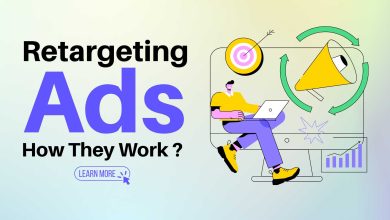Inbound Marketing vs Outbound Marketing
Marketing is an essential function for any business looking to attract customers and grow their revenue. In today’s digital age, there are two primary methods of marketing: inbound marketing and outbound marketing. While both approaches have their advantages and disadvantages, understanding the differences between them can help businesses choose the right marketing strategy for their needs.
What is Inbound Marketing?
Inbound marketing is a methodology that focuses on attracting potential customers to your business by creating valuable content and experiences. Rather than pushing your message out to a wide audience, inbound marketing seeks to draw customers in by providing them with helpful information that addresses their needs and pain points.
The primary goal of inbound marketing is to build trust and establish a relationship with potential customers. By providing them with valuable information, you can position yourself as an expert in your industry and earn their trust. This can lead to increased brand awareness, higher search engine rankings, and more leads and sales over time.
Some common inbound marketing tactics include:
- Blogging: Creating high-quality blog content that addresses common questions and pain points for your target audience.
- Social media marketing: Using social media platforms to share your content, engage with your audience, and build your brand.
- Search engine optimization (SEO): Optimizing your website and content for search engines to improve your visibility and rankings in search results.
- Content marketing: Creating and distributing valuable content such as ebooks, whitepapers, and webinars to educate your audience and build trust.
- Email marketing: Sending targeted emails to your subscribers with valuable content and offers to nurture leads and build relationships.
What is Outbound Marketing?
Outbound marketing, also known as traditional marketing, is a more traditional approach to marketing that involves pushing your message out to a wider audience. This can include interrupting people’s daily routines with advertisements on TV, radio, billboards, or print media.
The primary goal of outbound marketing is to reach as many people as possible with your message, in the hope of catching the attention of potential customers. While this approach can be effective at reaching a large audience, it can also be intrusive and unwelcome, leading to a negative perception of your brand.
Some common outbound marketing tactics include:
- Television advertising: Creating commercials and airing them on TV to reach a wide audience.
- Print advertising: Placing ads in newspapers, magazines, and other print media to reach a specific audience.
- Cold calling: Reaching out to potential customers over the phone to pitch your products or services.
- Direct mail: Sending physical mail to potential customers with promotional materials or offers.
- Event marketing: Attending trade shows, conferences, and other events to promote your brand and products to a live audience.
Inbound Marketing vs Outbound Marketing: Which is Better?
Both inbound and outbound marketing can be effective at reaching customers and promoting your brand, but each approach has its strengths and weaknesses.
Advantages of Inbound Marketing:
- Builds trust and credibility: By providing valuable content and addressing your audience’s needs, you can build trust and establish yourself as an expert in your industry.
- Attracts high-quality leads: Inbound marketing tactics tend to attract leads who are actively seeking information or solutions related to your products or services.
- Cost-effective: Inbound marketing tactics such as blogging, social media, and email marketing are generally more cost-effective than outbound marketing tactics such as TV advertising and direct mail.
Disadvantages of Inbound Marketing:
- Takes time to see results: Inbound marketing is a long-term strategy that requires time and effort to see results. It may take several months or even years to build a significant following and see a return on your investment.
- Requires consistent effort: Inbound marketing requires consistent effort to create and distribute valuable content, engage with your audience, and stay up-to-date with the latest trends and best practices.
- Limited reach: Inbound marketing tactics are designed to attract a specific audience, which means they may not reach as many people as outbound marketing tactics.
Advantages of Outbound Marketing:
- Reaches a wider audience: Outbound marketing tactics such as TV commercials, billboards, and print ads can reach a much wider audience than inbound marketing tactics.
- Generates quick results: Outbound marketing tactics can generate quick results, as they are designed to reach a large audience and generate immediate interest.
- Targets specific demographics: Outbound marketing tactics can be targeted to specific demographics based on factors such as age, gender, income, and location.
Disadvantages of Outbound Marketing:
- Can be intrusive: Outbound marketing tactics can be intrusive and unwelcome, leading to a negative perception of your brand.
- Expensive: Outbound marketing tactics such as TV advertising and print advertising can be expensive, especially if you are targeting a large audience.
- Limited engagement: Outbound marketing tactics are often designed to generate immediate interest, but they may not lead to long-term engagement or customer loyalty.
Which Approach is Right for Your Business?
Ultimately, the decision to use inbound or outbound marketing depends on your business goals, target audience, and budget. In general, inbound marketing is a better fit for businesses that are looking to build trust, establish themselves as thought leaders in their industry, and attract high-quality leads over time. Outbound marketing, on the other hand, is better suited for businesses that are looking to reach a wider audience quickly and generate immediate interest in their products or services.
When deciding which approach to use, it’s important to consider your target audience and the types of marketing channels they are most likely to engage with. For example, if you are targeting a younger demographic, social media and influencer marketing may be more effective than print advertising or direct mail.
It’s also important to measure the effectiveness of your marketing campaigns over time and adjust your strategy as needed. By tracking metrics such as website traffic, lead generation, and customer acquisition costs, you can identify which tactics are working and which ones need to be improved or eliminated.
Example for Inbound Marketing
- Blogging: Creating valuable content in the form of blog posts that answer common questions or provide insights into your industry is a classic inbound marketing tactic. By providing helpful information to your target audience, you can establish your business as a thought leader in your industry and attract potential customers to your website.
- Search engine optimization (SEO): Optimizing your website and content for search engines like Google is another key inbound marketing tactic. By using relevant keywords and creating high-quality content, you can increase your visibility in search results and attract more organic traffic to your website.
- Social media marketing: Using social media channels like Facebook, Instagram, and Twitter to promote your content and engage with potential customers is an effective way to attract and nurture leads. By sharing valuable content, responding to comments and messages, and building relationships with your followers, you can establish your brand as trustworthy and build a loyal customer base over time.
- Email marketing: Building an email list and sending targeted email campaigns is another popular inbound marketing tactic. By providing valuable content and personalized offers to subscribers, you can nurture leads and encourage them to make a purchase or take another desired action.
- Gated content: Creating valuable content like e-books, whitepapers, or webinars and requiring visitors to provide contact information to access it is a way to capture leads and nurture them over time. By providing valuable information that helps potential customers solve a problem or achieve a goal, you can establish your brand as a trusted resource and build a relationship with your target audience.
- Influencer marketing: Partnering with influencers in your industry who have large followings on social media can be an effective way to reach a wider audience and build credibility for your brand. By leveraging the influencer’s existing audience and reputation, you can increase brand awareness and attract new customers to your business.
Example for Outbound Marketing
- Television advertising: Running advertisements on television during popular programs or events is a classic example of outbound marketing. By interrupting viewers with your message, you can reach a wide audience and increase brand awareness.
- Print advertising: Running ads in newspapers, magazines, or other print publications is another form of outbound marketing. By placing your message in front of readers who are already engaged with the content, you can increase the chances of capturing their attention and generating leads.
- Telemarketing: Cold calling or reaching out to potential customers over the phone is an example of outbound marketing. By interrupting their day with a sales pitch, you can attempt to generate leads and close sales.
- Direct mail: Sending physical mail, such as flyers or catalogs, to potential customers is another form of outbound marketing. By sending your message directly to their mailbox, you can increase the chances of capturing their attention and generating leads.
- Trade shows: Attending trade shows and conferences to promote your product or service is a common outbound marketing tactic. By setting up a booth and engaging with attendees, you can generate leads and increase brand awareness.
- Billboards: Placing advertisements on billboards alongside busy highways or in popular urban areas is another form of outbound marketing. By placing your message in front of a large number of people, you can increase brand awareness and generate leads.
Conclusion
Inbound marketing and outbound marketing are two different approaches to promoting products or services, each with its own strengths and weaknesses. While inbound marketing focuses on creating valuable content and experiences that attract potential customers to your business, outbound marketing involves pushing a message or advertisement out to a wider audience. The decision to use inbound or outbound marketing depends on your business goals, target audience, and budget, and it’s important to measure the effectiveness of your marketing campaigns over time and adjust your strategy as needed. By understanding the differences between inbound and outbound marketing and choosing the right approach for your business, you can attract more customers and grow your revenue over time.
| Inbound Marketing | Outbound Marketing | |
|---|---|---|
| Goal | To attract potential customers to your business | To reach a wide audience and generate leads or sales |
| Approach | Provide valuable content and engage with customers | Interrupt potential customers with a sales message |
| Channels | Blogging, SEO, social media, email marketing, gated content, influencer marketing | Television advertising, print advertising, telemarketing, direct mail, trade shows, billboards |
| Targeting | Targeted to specific audience segments based on interests or behaviors | Less targeted, often aimed at a general audience |
| Cost | Can be more cost-effective than outbound marketing | Can be more expensive than inbound marketing |
| Reputation | Can improve brand reputation by providing value and building trust with customers | Can harm brand reputation if customers find messages intrusive or annoying |
| Results | Often results in higher quality leads and long-term customer loyalty | Can result in a high volume of leads but lower quality or fewer long-term customers |



